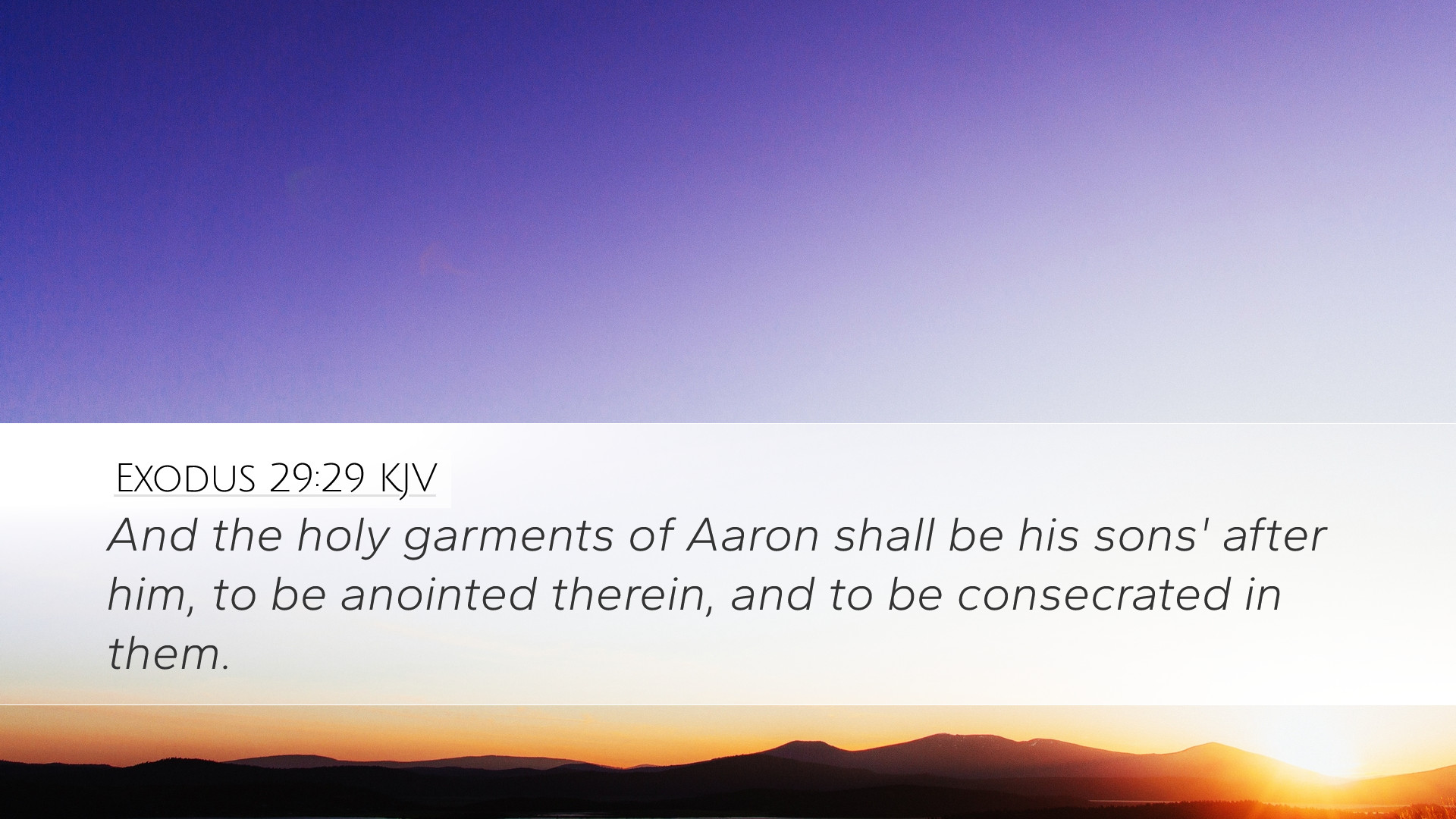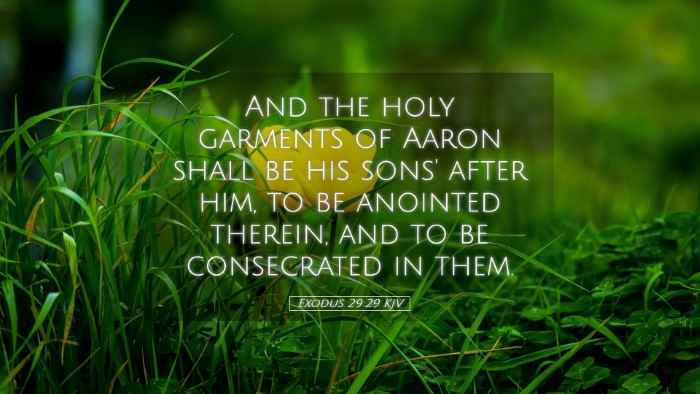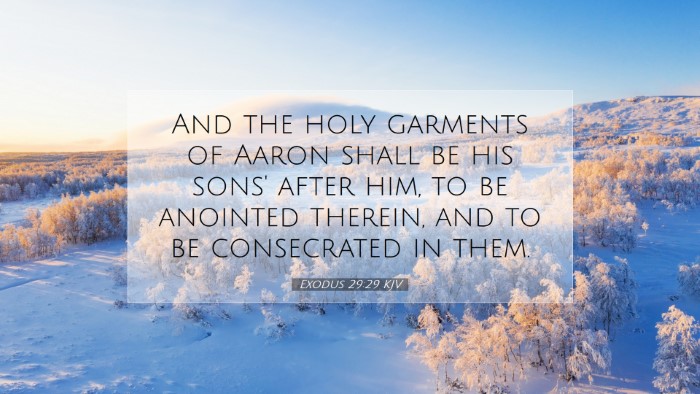Exodus 29:29 - Commentary and Insights
Verse: "And the holy garments of Aaron shall be his sons' after him, to be anointed therein and to be consecrated in them." (Exodus 29:29, KJV)
This verse primarily discusses the succession of the priestly garments from Aaron to his sons, emphasizing the continuity of the priesthood and its sacred duties. The garments symbolize not only the role of the High Priest but also the inheritance of that role by Aaron's descendants.
Insights from Matthew Henry
Matthew Henry underscores the significance of the holy garments as both a symbol of dignity and sanctity. He states:
- The garments of Aaron denote the solemnity of the priesthood. They were not mere clothing but imbued with divine purpose.
- This transmission of garments represents the continuity of the priestly lineage. Each succeeding high priest would wear the garments, signifying the ongoing work of God through His chosen people.
- Henry also notes the importance of being anointed. This act of anointing was essential to consecrate the priest for the holy functions required of him.
Insights from Albert Barnes
Albert Barnes elaborates on the importance of the priestly garments, linking them with the office and duties of the priesthood:
- Barnes emphasizes that the garments signify the divine authority. They were to be worn during sacred duties, serving as a reminder of the holiness required in their service to God.
- He points out that these garments were also a visual representation of God’s presence among His people. The ornate fabrics and design reflected the glory of God and the honor due to Him.
- Furthermore, he stresses the communal aspect. The garments belonged to Aaron’s sons, highlighting the importance of communal sanctity in worship and priestly functions.
Insights from Adam Clarke
Adam Clarke provides a detailed analysis of the implications of the phrase "holy garments":
- Clarke points out that the "holy garments" indicate a divine prescription. They were specifically designed by God for His service, which conveys the idea that worship must be done according to divine standards.
- According to Clarke, the priesthood represents a special relationship with God. The garments are a manifestation of this relationship, symbolizing anointed service and divine appointment.
- Clarke also notes the generational aspect of the priesthood. The passing down of the garments signifies the continuation of spiritual leadership and responsibility from father to son, ensuring that the worship of God remains central to the community.
Theological Significance
The implications of Exodus 29:29 extend beyond the ritual functions of the Aaronic priesthood. Theologically, this passage integrates themes of holiness, consecration, and continuity of God's covenantal relationship with Israel:
- Holiness: The garments symbolize the holiness required of those who serve God. They remind the priests of their unique standing before the Lord, embodying the call for believers today to pursue holiness in their lives.
- Consecration: The anointing and consecration associated with the garments remind contemporary readers of the need for divine empowerment in fulfilling God’s calling, reinforcing the belief that spiritual service must be divinely sanctioned.
- Continuity: The transmission of priestly roles from Aaron to his sons illustrates God’s faithfulness in providing spiritual leadership through generations, encouraging current leaders to maintain a lineage of faithfulness and dedication in ministry.
Application for Pastors and Theologians
This passage calls pastors and theologians to consider the significance of their roles and the weight of spiritual leadership:
- Reverence in Ministry: Just as Aaron's garments illustrated reverence towards God, ministers should approach their calling with profound respect and a hunger for holiness.
- Passing the Baton: The narrative stresses the importance of mentoring the next generation, imparting not only knowledge but also the sacredness of their calling to lead in worship and ministry.
- Community of Believers: The priestly lineage serves as a metaphor for the body of Christ, where each member is called to contribute to the function and health of the whole, united in worship and service to God.
Conclusion
Exodus 29:29 encapsulates vital truths about the nature of God's call, the importance of holiness, and the legacy of spiritual leadership that transcends generations. By examining this passage through the lenses of respected theological commentators, we are reminded of the enduring principles that govern worship, service, and community within the context of our faith. Such insights are invaluable for pastors, students, theologians, and scholars alike as they navigate the complexities of spiritual leadership and communal worship.


